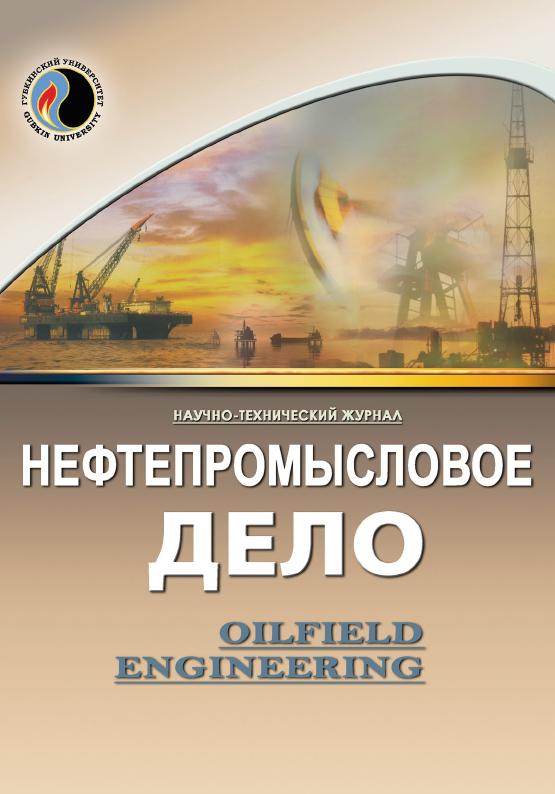Integrated analysis of borehole and seismic data in order to form a facies model of the Upper Jurassic sulfate-carbonate deposits
UDC: 550.832
DOI: 10.33285/0207-2351-2023-4(652)-21-30
Authors:
KOSTIN NIKOLAY G.1,
PRIBUSH ATTILA P.1,
POSHIBAEV VLADIMIR V. 1,2
1,2,
ZADOROZHNYAYA IRINA A. 1
1,
NOSOV MAXIM A.1
1 LUKOIL-Engineering, Moscow, Russia
2 National University of Oil and Gas "Gubkin University"
Keywords: core, thin sections, well logs, seismic facies, seismic attributes, neural network, machine learning
Annotation:
The development of facies distribution model within a field is a key procedure when building a geological model of a complexly-composed carbonate reservoir. The substantiation of the rational system of a field’s development depends on the results obtained.
The article proposes a methodology of geological-geophysical data integration including machine-learning technology that provides optimization of facies distribution prediction. The well data analysis including core and well logging is shown on the example of the internal and outer ramp sediments. Facies localization and the process of machine learning with identification of the most productive zones are presented for the rocks related to internal ramp.
Preparation of the data for machine learning was performed with the gradual transition from the direct studying of core-scale rocks to the level of a well and after that to seismic studies. The results obtained in the course of machine-learning are subjected to checking, based on sequence stratigraphy analysis results.
The dependence of facies distribution prognosis validity on the quality and amount of borehole and seismic data as well as the necessity of attracting a group of specialized professionals are noted.
Bibliography:
1. Rebelle M., Lalanne B. Rock-typing in Carbonate: A Critical Review Of Clustering Methods // SPE Abu Dhabi International Petroleum Exhibition and Conf., Abu Dhabi, UAE, 10–13 November 2014. – P. 1–15. – DOI: 10.2118/171759-MS
2. Kostin N.G. Kharakterizatsiya porod pri formirovanii vkhodnykh dannykh dlya petrofizicheskogo modelirovaniya na primere karbonatnykh porod-kollektorov verkhnemelovogo vozrasta // Karotazhnik. – 2021. – № 7(313). – S. 94–105.
3. The Arab Formation in central Abu Dhabi: 3-D reservoir architecture and static and dynamic modeling / J. Grötsch, O. Suwaina, G. Ajlani [et al.] // GeoArabia. – 2003. – Vol. 8. – P. 47–86. – DOI: 10.2113/geoarabia080147
4. Arabian Plate Sequence Stratigraphy / P.R. Sharland, R. Archer, D.M. Casey [et al.]. – GeoArabia Special Publication 2, Gulf PetroLink, Bahrain, 2001. – 371 p.
5. Al-Husseini Moujahed. Jurassic Sequence Stratigraphy of the Western and Southern Arabian Gulf // GeoArabia. – 1997. – Vol. 2. – P. 361–382. – DOI: 10.2113/geoarabia0204361
6. New Insights into Regional Correlation and Sedimentology, Arab Formation (Upper Jurassic), Offshore Abu Dhabi / M.S. Silwadi, A. Kirkham, M. Simmons, B. Twombley // GeoArabia. – 1996. – Vol. 1. – P. 6–27. – DOI: 10.2113/geoarabia010106
7. Wilson A. Chapter 6 Jubaila–Arab–Hith sequences // Geological Society, London, Memoirs. – 2020. – Vol. 53. – P. 159–186. – DOI: 10.1144/M53.6
8. Pribush A.P. Opyt primeneniya mashinnogo obucheniya dlya prognoza litologicheskikh kharakteristik, treshchinovatosti, poristosti i pronitsaemosti // Inzhenernaya praktika. – 2022. – № 1. – S. 50–66.
9. Poshibaev V.V., Pribush A.P., Gataulina E.R. Litologo-fatsial’nye modeli melovykh karbonatnykh rezervuarov Mesopotamskogo progiba: osobennosti stroeniya i zakonomernosti razmeshcheniya // Aktual’nye problemy nefti i gaza. – 2022. – Vyp. 2(37). – S. 186–201. – URL: https://doi.org/10.29222/ipng.2078-5712.2022-37.art14
10. Diagenetic impacts on hydraulic flow unit properties: insight from the Jurassic carbonate Upper Arab Formation in the Persian Gulf / M. Sharifi-Yazdi, H. Rahimpour-Bonab, M. Nazemi [et al.] // J. of Petroleum Exploration and Production Technology. – 2020. – Vol. 10. – P. 1783–1802. – DOI: 10.1007/s13202-020-00884-7

